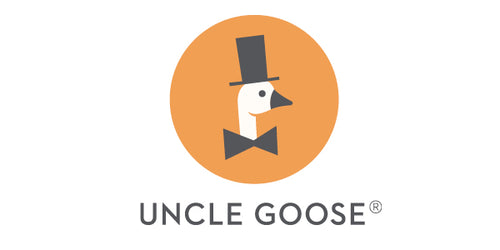
Why We Aren’t Living In A Post-Genre World
Your Uncle Goose keeps an eye and an ear on pop culture. And we keep seeing and hearing about how we are entering a post-genre world.
Are we, though? We don’t think so.
When we hear “post-genre,” it’s often used to talk about pop music. The idea is that new music doesn’t neatly fall into genre labels or categories.
Think of pop songs like Springsteen by Eric Church. It’s a country song…or is it? Because if you take away the southern drawl, it’s a pop song. And the lyrics refer to a classic rock musician, Bruce Springsteen, as well as contain his classic rock lyrics.
Formation by Beyoncé blends hip hop and R&B. Burn the Witch by Radiohead contains elements of Rock, Electronic, Classic, and Pop genres.
And Old Town Road by Lil Nas X? It jams in just about every genre there is! (Kidding-not-kidding.)
There are tons of examples of genre-bending and genre-blending in pop music. The phenomenon isn’t limited to music, though. We also see it in film, books, and television shows.
Take the movie Groundhog Day from 1993. Is it a blend of Romance and Comedy — a Romcom? Or is it a Drama with Comedy as a subgenre? The film also contains elements of Fantasy and Science Fiction.
Jordan Peele thinks his 2017 film Get Out was a straight up Horror movie, but lots of people disagree. It’s been labeled with Horror, Thriller, Comedy, Mystery, and Urban genres.
And in 1977, the first Star Wars came out. It it Science Fiction? Epic? Western? Action? Adventure? People have been arguing the genre of Star Wars for decades.
Blended genres and genre-crossing works of art have been around for a long time. Artists continually push at boundaries to create new and exciting works of art.
We need artists to keep doing that. And yet, audiences still need genres for every work of art.
That’s because genres are categories that help audiences find films, books, art, songs, or shows they might enjoy. They also help audiences avoid art they might not want to consume.
Many great works of art don’t fall squarely into one genre. They overlap each other. When you think of your favorite films, books, and music: you may find that they borrow conventions from many genres.
If this is hard to conceptualize, try using two of our block sets as a discussion or study aid to explore genres and subgenres:
1. Use our Lights, Camera, Action! Blocks to explore film genres. Each block focuses on one movie genre. It features a genre description, character archetypes, subgenres, font styles, iconography, and the history of each genre.
2. Try our Uncle Goose State of Sound Blocks to help you explore American musical genres. Each block focuses on the state of the origin of each American music genre. You’ll see its definition, subgenres, and get a sense of its history.
While each of our genre-themed blocks are content dense, your discussion can become even richer when you combine the blocks together. You start to see how genres might borrow from each other to create new genres.
Your Uncle Goose feels the artist’s pain of being genre mis-identified. In part, we stopped going to one certain trade show because the organizers insisted we exhibit under the “baby toys” category.
First of all, our toys aren’t for babies. Sure, our Classic ABC Blocks are children’s toys. But our blocks are not for babies.
What about our Chord Cube Blocks for learning to play guitar? Or our State of Sound Blocks or Lights, Camera, Action! Blocks? They’re more suited for adult learning. Or home design. Or gifts. Or….
See how that works? Even our blocks defy genres! As artists, your Uncle Goose likes to defy boundaries, too.
When you play with our blocks, you may even invent new genres by combining the ones you see in front of you! These are building blocks. So why not use them to sort, stack, and build new genres?
We’re far from a post-genre world. Rather, artists are constantly breaking genre boundaries. We mix, match, bend, borrow, and blend to make new art. Give it a try!





